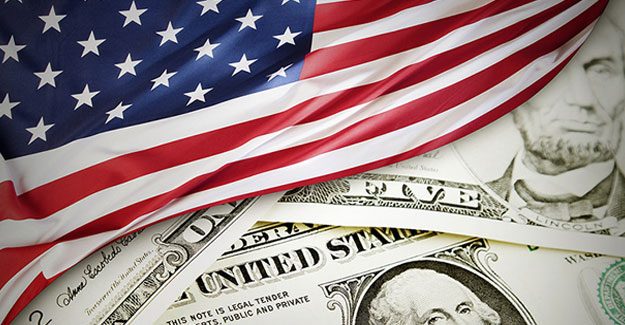The gold standard is a monetary system in which a nation’s currency is backed by gold and can be exchanged for a predetermined quantity of gold. From the late 19th to early 20th century, this system was widely utilized. With the passage of the Gold Standard Act in 1900, the United States officially adopted the gold standard.
During the Great Depression of the 1930s, the United States and other nations faced increasing economic difficulties and high unemployment rates. To stimulate the economy, the U.S. government began printing money and increasing the money supply, resulting in inflation and dollar devaluation.
President Nixon completely removed the United States from the gold standard in 1971, effectively ending the Bretton Woods system that had pegged the value of other currencies to the US dollar, which was pegged to gold. Since then, the United States has operated under a fiat monetary system, where currency is backed by the government’s full faith and credit rather than a specific commodity such as gold.
The debt ceiling is a legislative cap on the amount of national debt the United States is permitted to accumulate. Congress determines the debt ceiling, which limits the amount the federal government can borrow to finance its operations and pay its bills.
When the federal government wishes to issue new debt, it must first obtain Congress’s approval to increase the debt ceiling. As government spending and debt levels have risen over the years, the debt ceiling has been raised multiple times.
The debt ceiling has frequently been a source of political controversy, as raising it is sometimes equated with allowing the government to spend more money. This has resulted in numerous political conflicts throughout the years, with some members of Congress opposing increases to the debt ceiling and calling for greater fiscal responsibility and spending cuts. In 2011 and 2013, the United States faced a debt ceiling crisis in which the government risked defaulting on its debt obligations if the debt ceiling was not increased. These debates resulted in last-minute agreements to increase the debt ceiling, but also brought to light the ongoing political difficulties associated with managing the national debt.
The Treasury Department’s Bureau of Engraving and Printing (BEP) prints currency for the United States government. BEP produces Federal Reserve Notes and other security products for the Federal Reserve System, the United States’ central bank. As for the amount of currency printed in the last five years, the Federal Reserve does not disclose exact figures. In recent years, however, the Federal Reserve’s balance sheet, which reflects its assets and liabilities, has grown significantly, reflecting an increase in the money supply. This growth can be attributed to a variety of factors, including monetary policy designed to support the economy during economic downturns, increased government spending, and other factors. It is important to note that the amount of money in circulation and the federal debt, which represents the total amount owed by the government, are not identical.
In general, the Federal Reserve has the ability to regulate the money supply through the setting of interest rates, the purchase or sale of securities, and other means, which can influence the level of inflation and economic activity in the United States.
The Federal Reserve, also known as “the Fed,” employs interest rates to influence the economy. When the Federal Reserve raises interest rates, borrowing money becomes more expensive, which can reduce economic activity and inflation. When the Fed reduces interest rates, borrowing money becomes less expensive, which can stimulate economic activity and increase inflation.
A higher interest rate increases the cost of borrowing money for consumers and businesses, which can reduce spending and investment. This can result in a decrease in the demand for goods and services, causing prices to fall and thereby helping to control inflation.
In contrast, lower interest rates can stimulate spending and investment by lowering the cost of borrowing money for consumers and businesses. This increased demand has the potential to drive up prices and increase inflation.
The Fed’s decisions regarding interest rates can also affect the value of the dollar and the stock market. Higher interest rates can make the U.S. dollar more appealing to investors, which could cause the currency’s value to rise. On the other hand, lower interest rates can diminish the dollar’s appeal, potentially resulting in a decline in its value.
In general, the Fed’s objective is to strike a balance between fostering economic growth and stability and preventing inflation and deflation. The Federal Reserve raises and lowers interest rates based on its evaluation of current economic conditions and its projections for the future.
A war can have a significant impact on the economy of the United States. Wars typically require substantial government spending, which can lead to a rise in the national debt and inflation. The diversion of resources to the war effort can reduce investments in areas such as education, infrastructure, and research and development, which can have long-term effects on economic growth. On the other hand, the increase in demand for certain products, such as weapons and ammunition, can create economic opportunities for particular industries.
Wars can also disrupt trade, making it harder to import and export goods, and employment, resulting in job losses in certain industries. In addition, the psychological impact of a war can diminish consumer and business confidence, resulting in a decline in spending and investment, which further retards economic growth. It is important to note that the specific impact of a war on the economy will depend on a number of factors, including the size and duration of the conflict, the state of the economy prior to the war, and the conflict’s overall impact on the global economy.
Price stability is one of the benefits of a currency with a fixed supply. With a fixed supply, the money supply cannot be increased to meet rising demand, which reduces the risk of inflation and permits more stable prices. This can provide individuals and businesses with a more predictable economic environment, making financial planning and decision-making easier.
Another advantage is the decrease in currency manipulation. Governments and central banks have the ability to manipulate the money supply to achieve specific economic goals, such as fostering economic growth or containing inflation. With a fixed supply, these actions are constrained, thereby preventing the arbitrary devaluation of currency.
A currency with a fixed supply can also serve as a store of value because it is not subject to the same inflation risks as other currencies. This can make it a more appealing investment option for individuals and institutions, thereby helping to stabilize the economy. However, it is important to note that a currency with a fixed supply can also have some restrictions. For instance, a fixed supply currency can make it difficult for central banks to stimulate economic growth through monetary policy during periods of economic recession or deflation
In conclusion, a currency with a fixed supply can provide price stability, less currency manipulation, and a more predictable economic environment. Prior to deciding to implement a currency with a fixed supply, it is vital to carefully consider the potential limitations.
Like many other cryptocurrencies, Litecoin is intended to offer several advantages over traditional fiat currencies such as the US dollar. Among these benefits are accelerated transaction times, decreased transaction fees, and increased decentralization.
Litecoin’s faster transaction processing speed is one of its primary advantages. Litecoin transactions can be processed in just a few minutes, whereas traditional fiat currencies can take days or even weeks to clear. This makes Litecoin an ideal option for individuals who need to make quick, secure transactions. Additionally, Litecoin has lower transaction fees, which is an advantage. In general, the fees associated with using Litecoin are significantly lower than those associated with traditional fiat currencies. This makes it a cost-effective option for individuals who engage in frequent transactions as well as merchants who must accept customer payments. Lastly, Litecoin is designed to be highly decentralized, meaning that no single entity or government controls it. This decentralization makes it more secure, less vulnerable to fraud and other forms of malice, and gives users greater control over their funds.
While the US dollar has been a stable currency for many years, the introduction of cryptocurrencies such as Litecoin has introduced new and innovative payment and value storage methods. Due to its faster processing times, lower fees, and increased decentralization, I view Litecoin as a superior option.






